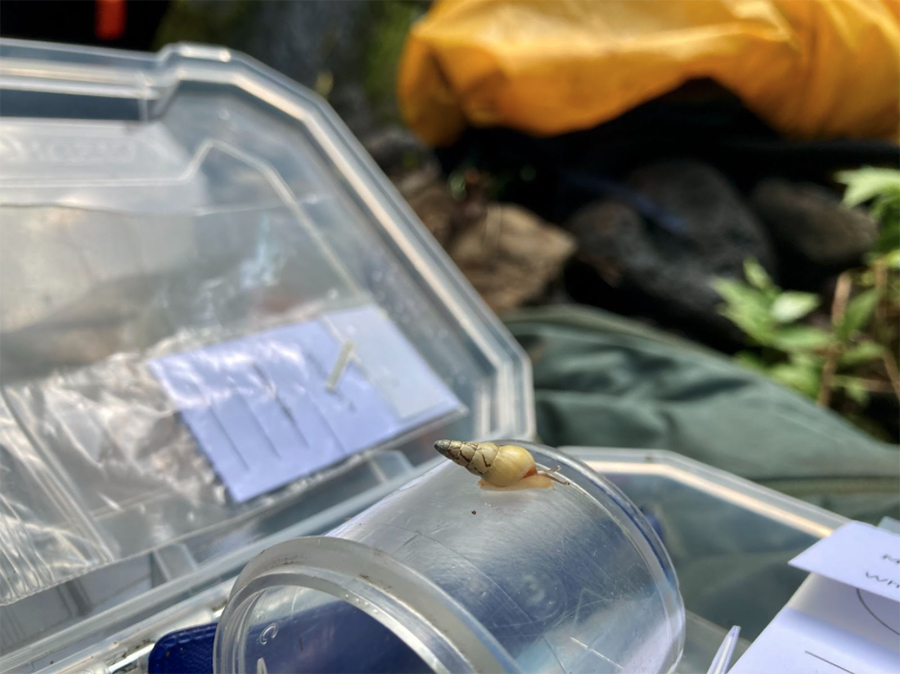Kāhuli Conservationists: Caring for the small things to care for the larger honua

Native Hawaiian land snails (kāhuli) are in steep decline due to a spread of threats like habitat loss, climate change, invasive species, and small population numbers. There are many unanswered questions surrounding what the kāhuli need for habitat. By looking at both past museum collections and current data, this project aims to map where the snails exist now and project where they may shift to in the future. A Maui Nui based field team has been collecting data on Maui Nui kāhuli presence/absence, as well as habitat characteristics. Additional habitat data will help establish the degree to which snails prefer one area over another. We hypothesize that microhabitat features may be key to determining snail presence/absence and may help explain where the snails can go. Local habitat can also be better described and analyzed through new imagery means, helping to paint a larger and more detailed picture of where kāhuli live. Multiple and continued field expeditions are necessary to determine kāhuli habitat across Maui Nui and to locate prime areas where all native taxa can thrive, i.e. the biodiversity hotspots. Continued dedication in the field, new approaches as well as methods, and stewarding the next generation of kāhuli conservationists are all key to the long-term survival of our beloved native Hawaiian land snails.
PROJECT DETAILS
FUNDED:
FY2024
PI:
Lucas Fortini
Research Ecologist, USGS Pacific Islands Ecosystem Research Center
Graduate Scholar:
Lilly Thomey
Tropical Conservation Biology and Environmental Science, UH Hilo
Co-I:
Jonathan Price
Professor of Geography, UH Hilo
Collaborators:
Keahi M. Bustamente
Maui Nui Snail Extinction Prevention Program
Norine W. Yeung
Bishop Museum
Jaynee R. Kim
Bishop Museum
Kenneth A. Hayes
Bishop Museum
David R. Sischo
Hawaiʻi Snail Extinction Prevention Program
Ryan Perroy
UH Hilo

